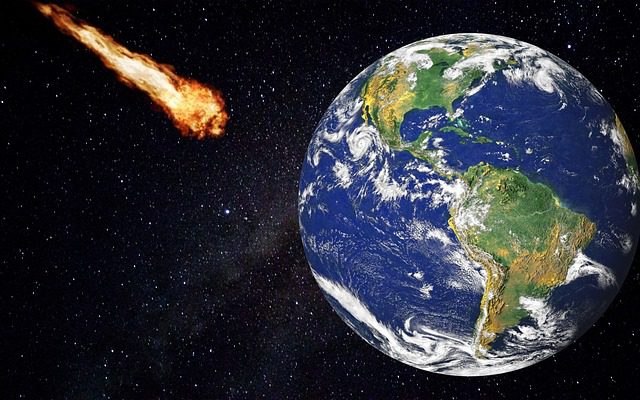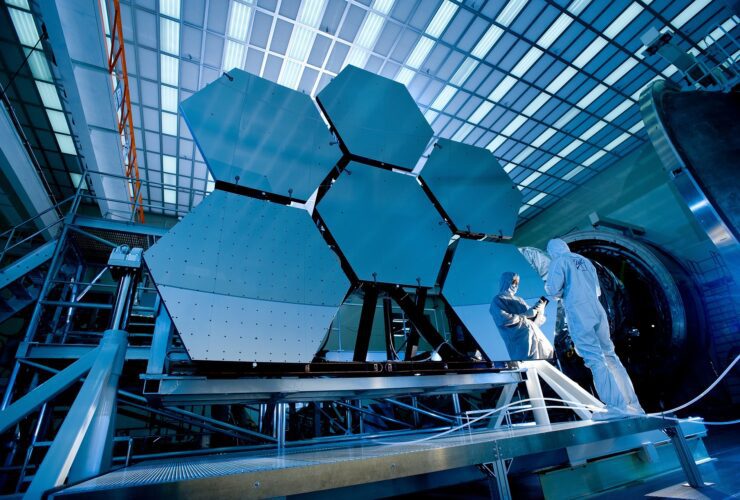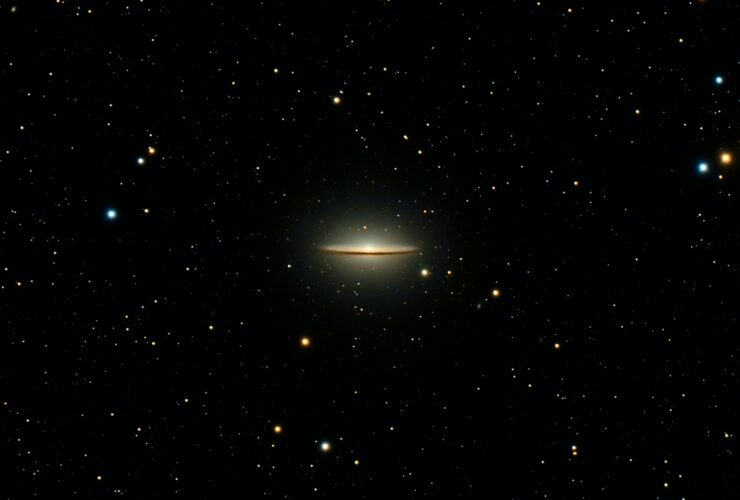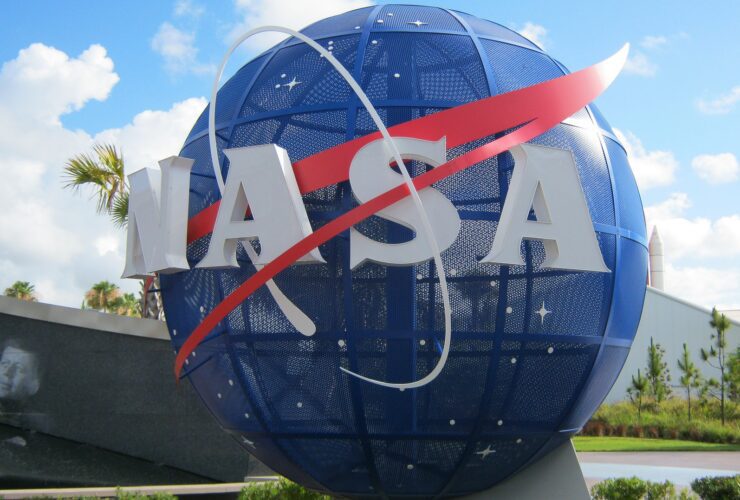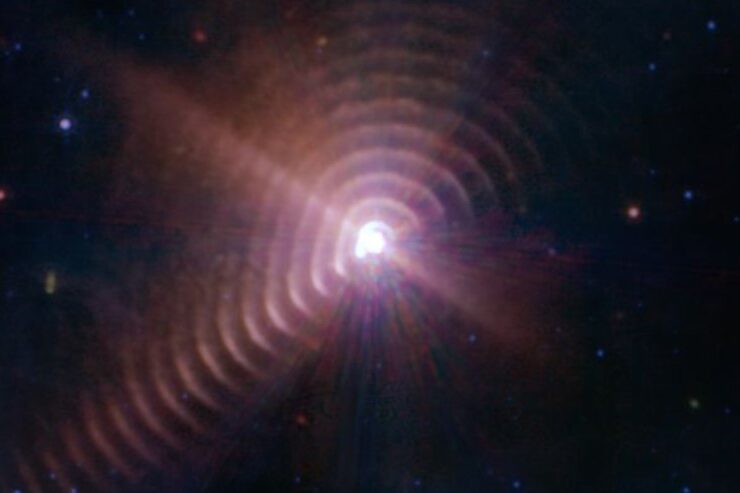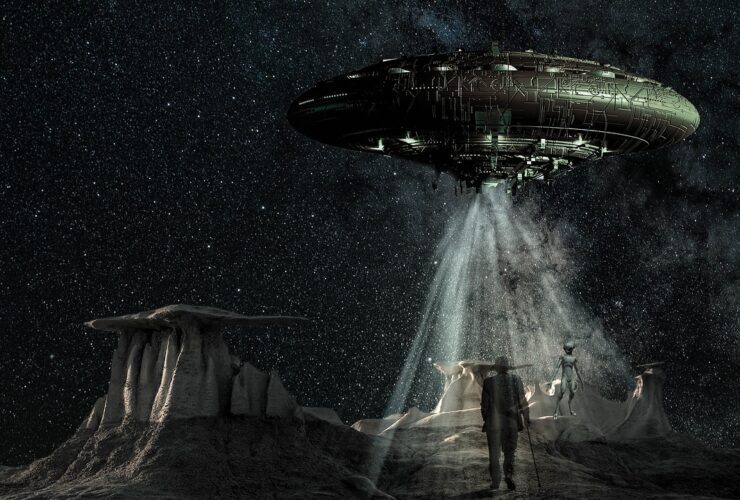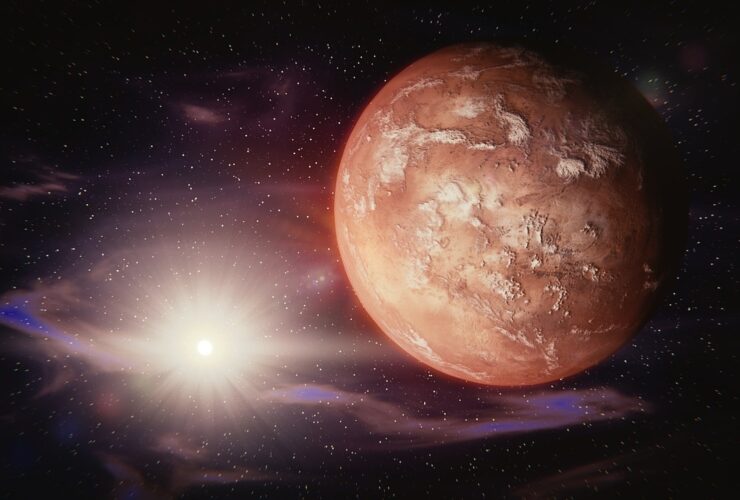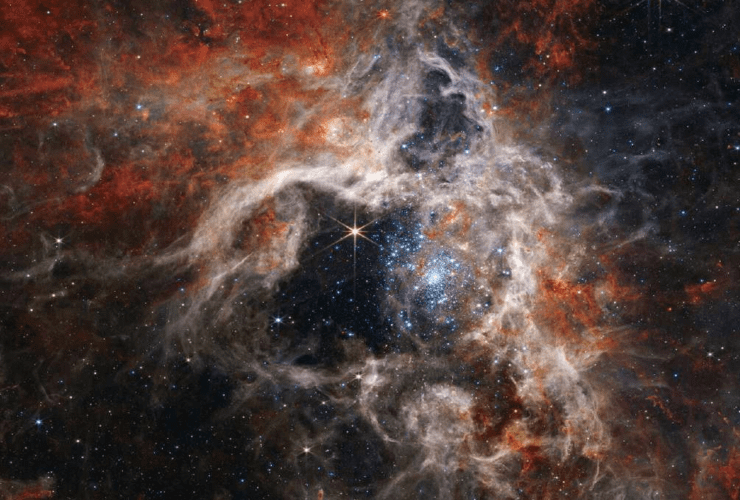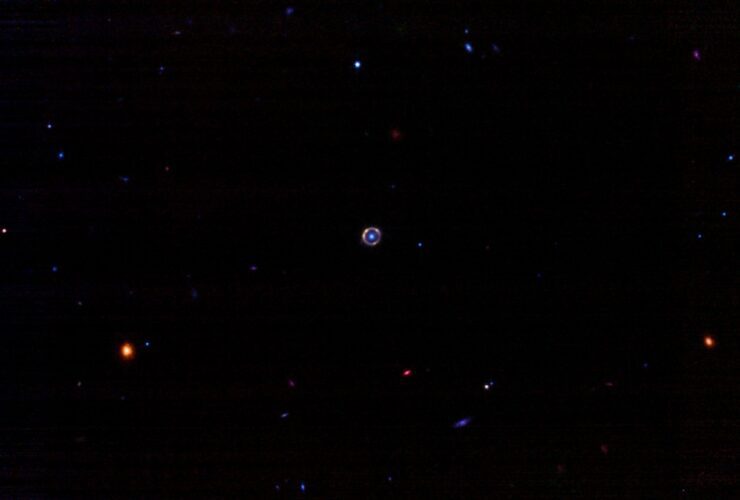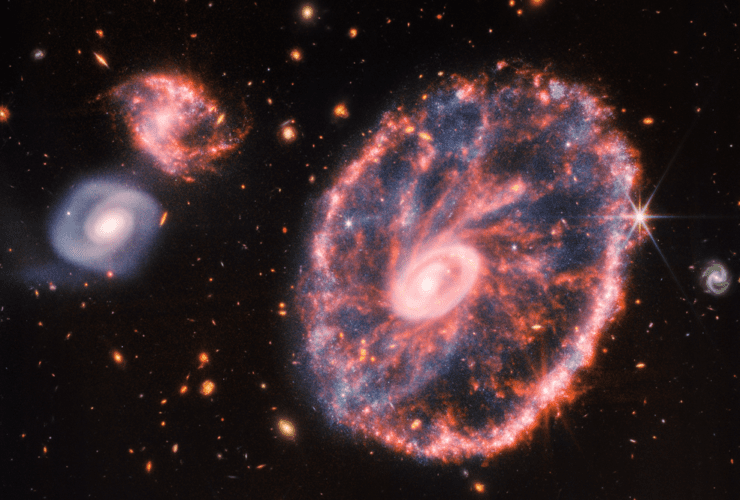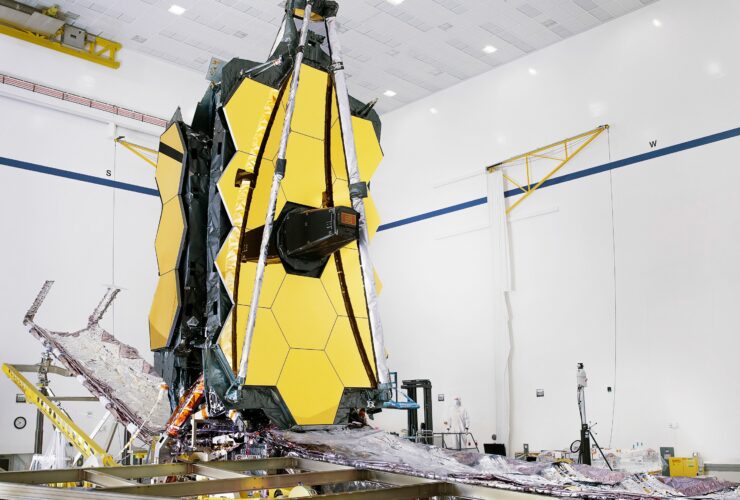Astronomers surely felt a few chills down their spine when they first discovered the 2024 YR4 asteroid last year in December, as this space rock clearly is no space dust. It’s the size of an imposing building, as it measures ...
The James Webb Space Telescope (JWST) was utilized by researchers in order to make the discovery of three of the universe’s oldest galaxies. They came into being fewer than 400 million years after the Big Bang, which occurred 13.4 billion ...
In yet another example of its potential to reveal cosmic secrets, NASA’s most powerful space telescope has determined the molecular and chemical profile of an exoplanet’s atmosphere. Following its debut earlier this year, the James Webb Telescope’s extraordinary infrared capabilities ...
NASA’s next-generation James Webb Space Telescope continues to be under the spotlight after it has presented photos of Jupiter, Neptune, and much larger celestial bodies. The telescope has now found evidence of a cluster of galaxies merging around a black ...
NASA’s James Webb Space Telescope (JWST) has already proved that it has what it takes to explore space and beyond. Recent data again support the telescope’s fantastic work by revealing incredible cosmic features! Astronomers were left in awe after they ...
The James Webb Space Telescope is maintaining its focus on our own cosmic ‘backyard’: the Solar System. After revealing the first images of Mars, as well as detailed photos of Jupiter, the next-gen telescope has now unveiled a new photo ...
There are countless reports across the world about UFO sightings. There are plenty of mysteries and wonders out there in the world. How could a civilization of thousands of years old build something so complex and precise as the Egyptian ...
Taking a look at those distant objects in the Universe, such as galaxies and stars, is so mainstream when it comes to astronomy! Why not study the planets of our Solar System more, instead? Who knows what we can find! ...
In recent months, the James Webb Space Telescope has shown to be an outstanding success for NASA. The multibillion-dollar equipment is successfully “unfolding the cosmos” by exposing cosmic light beyond the range of human vision, and the astounding findings have ...
NASA’s James Webb Space Telescope has captured a spooky giant space tarantula, where the biggest and hottest stars live. The Tarantula Nebula, aka 30 Doradus, is actually known as the ‘brightest star-forming place in the galaxies nearest our galaxy,’ according ...
NASA’s James Webb Space Telescope never ceases to amaze us all with its discoveries. That’s not even an exaggeration! After the first full-color images of the Cosmos were revealed last month by Webb, as well as new photos of Jupiter ...
The first ever direct picture of a planet beyond our solar system was taken by scientists using NASA’s James Webb Space Telescope, and it has been called a historic event in the field. The exoplanet HIP 65426 b was selected ...
Insanely detailed photographs of Jupiter and the furthest known star have been flooding our feeds since the initial James Webb Space Telescope images were published in July. Now, Webb has accomplished it once again, this time by photographing a virtually ...
Jupiter’s auroras and other features are being revealed more clearly than ever before thanks to the newest and most advanced space telescope in the world. On Monday, researchers from various institutions shared photographs of the largest planet in our solar ...
Just a few days ago, NASA’s James Webb Space Telescope presented images of the mesmerizing Cartwheel Galaxy. The cosmic structure is located 500 million light-years away from us, and you may have already guessed the reason for its unique moniker. ...
With the first records from the James Webb Space Telescope (JWST), a group of academics recently filed a study to MNRAS in which they report the discovery of a candidate galaxy named CEERS-93316 that formed roughly 250 million years after ...
James Webb Space Telescope: Mind-Bending Images Of The Cartwheel Galaxy And The Rest Of Our Universe
The James Webb Telescope is giving us a perspective of the cosmos that has never been possible before. We can’t even begin to fathom what James Webb views through the telescope, which is the beginnings of the universe and other ...
The James Webb Space Telescope of NASA was able to peek into the disorder of the Cartwheel Galaxy, which led to the discovery of new information on the galaxy’s center black hole as well as the birth of stars. The ...
The James Webb Space Telescope (JWST) of NASA has been pretty busy lately, as it presented the first full-color images of the Universe last month. But once again, the scientists in charge of JWST are up for great achievements! According ...
Jupiter in all its glory, as seen via NASA’s James Webb Space Telescope. Though it’s only been operational for a short period of time, the telescope has already managed to shock the scientific community once again. The breathtaking picture was ...
Humanity had a lot to wait for NASA to finally deploy the James Webb Space Telescope (JWST) into space. There’s no wonder why, as we’re talking about the most powerful space telescope ever built. NASA launched it last Christmas after ...
The James Webb Space Telescope hopes to learn how soon after the Big Bang galaxies formed and when stars began producing the ingredients required to create planets and life. The JWST has only just begun operations, yet it is already ...
In a recent interview, Doctor Jane Rigby, the operations project scientist for the James Webb Space Telescope, discussed how they decide where in the universe to spend their attention and what aspects of the cosmos continue to astound them. She ...
In recent images taken by the James Webb Space Telescope, astronomers discovered an unusual occurrence taking place in a far-off galaxy. This event was not present in the same galaxy when the Hubble Space Telescope was previously used to observe it. ...
Thanks to the observations of the most powerful space telescope, namely James Webb, astronomers have discovered the oldest galaxy in the Universe. The system of stars is 13.5 billion years old, meaning almost the same age as the Universe itself. ...

